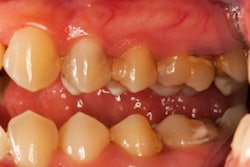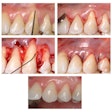Patients with gum disease may have an increased risk of developing prostate conditions, including enlarged prostate, prostate cancer, and chronic prostatitis, according to a review recently published in The Prostate.
However, further research may be needed to confirm this connection and clarify underlying mechanisms, the authors wrote.
“The findings suggest a potential association between periodontitis and prostatic alterations, especially prostate cancer,” wrote the authors, led by Beatriz Rodrigues Risuenho Peinado of the Federal University of Pará in Brazil (The Prostate, August 10, 2025).
The review examined whether periodontitis is associated with prostate alterations in adult men. Researchers conducted an electronic search for observational studies, including case-control, cross-sectional, and cohort studies, comparing patients with and without prostate conditions. In this review, 14 studies were assessed.
Of the studies, 12 found a greater prevalence of prostate cancer in participants with periodontitis compared to those without the condition. Fewer studies explored other prostate conditions, but three reported an association between periodontitis and benign prostatic hyperplasia. Additionally, one study found that men with periodontitis were more likely to be diagnosed with chronic prostatitis, they wrote.
Many studies had methodological issues, such as poor control of confounding factors like inconsistent diagnostic criteria and reliance on self-reported data. While most studies supported an association between periodontal disease and prostate changes, two studies found no significant differences between the groups.
Furthermore, limited data and weak study designs made it difficult to understand the link between oral and prostate health, highlighting the need for future research, the authors added.
“Prospective studies, with adequate control of confounding variables and standardized measures, will be essential to validate and elucidate the mechanisms of this possible interrelationship, strengthening clinical understanding and integrated management strategies for these conditions,” they concluded.




















